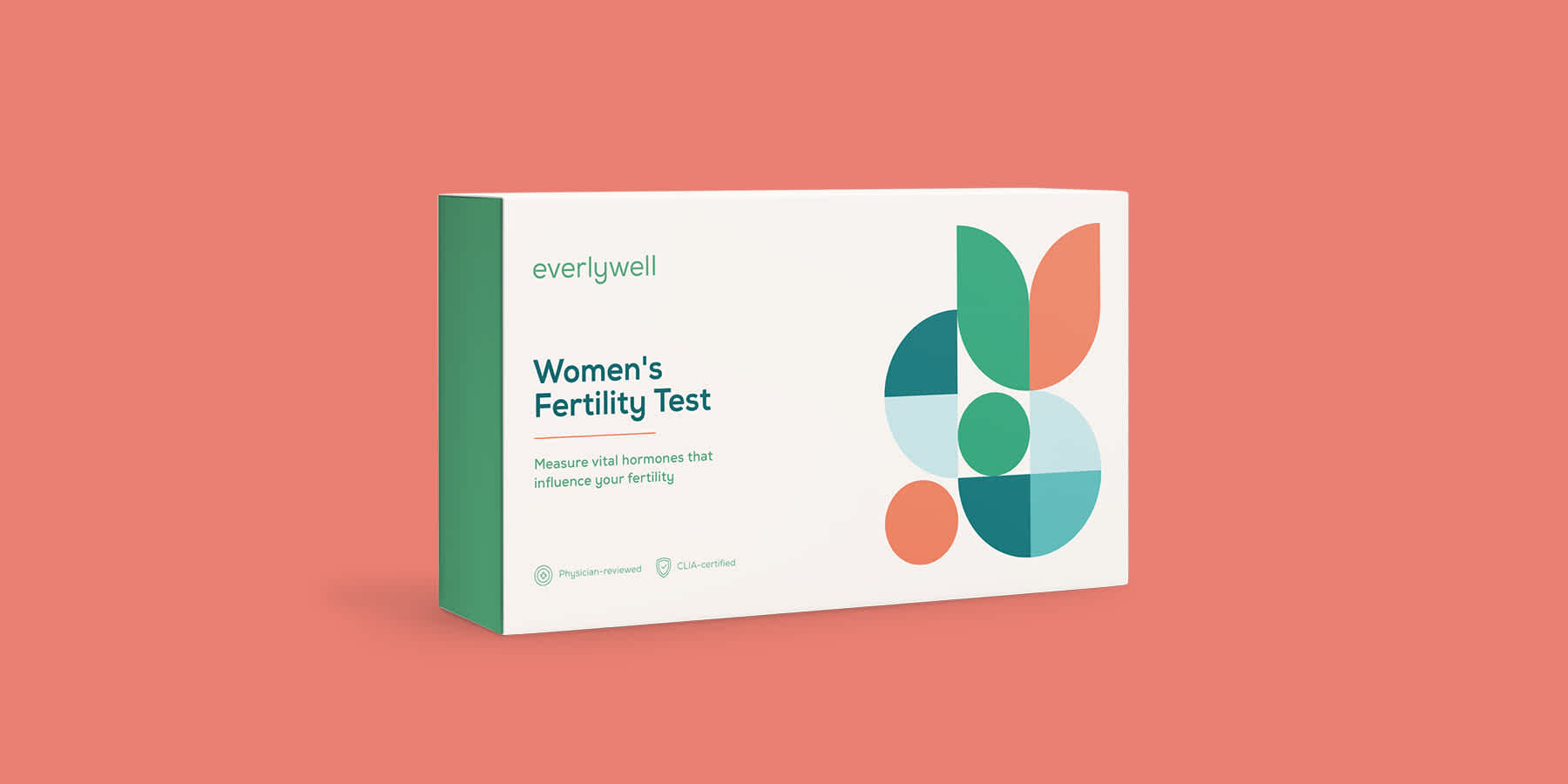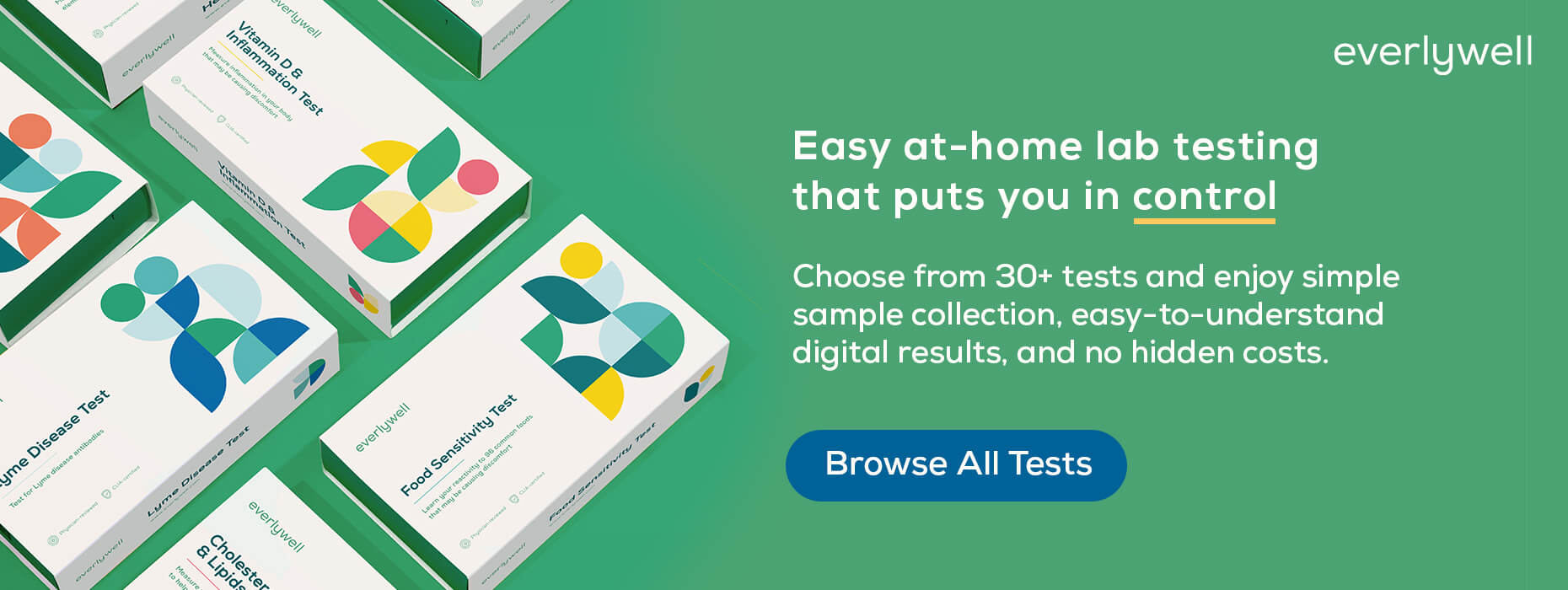
When is a Woman Least Fertile?
Medically reviewed on January 12, 2022. To give you technically accurate, evidence-based information, content published on the Everlywell blog is reviewed by credentialed professionals with expertise in medical and bioscience fields.
Family planning can be a joyous thing, but pregnancy can be deeply complex. As straightforward as the process can seem, pregnancy relies on numerous factors such as personal health, age, and general elements in lifestyle.
Timing can be one of the most difficult factors to get right, but it’s also one of the most important when it comes to pregnancy. Women aren’t always fertile, and depending on the time of the month, you may have a higher chance of getting pregnant. Read on to learn more about the menstrual cycle and when women are less fertile (and consider learning more about the at-home Women's Fertility Test).
Understanding Menstruation
Understanding when you are (and aren’t) fertile starts with understanding menstruation. Women are born with a set number of eggs (more precisely known as oocytes). At birth, there are up to 2 million eggs, which are stored in two ovaries. By puberty, that number goes down to about 300,000 to 400,000. Those numbers taper off significantly as you go through the monthly menstrual cycle until you reach menopause, which signals the end of the ability to reproduce [1].
Menstruation, also known as your menstrual cycle, or menstrual period, is how your body prepares for potential pregnancy every month. This preparation process is controlled by a series of hormones, most prominently progesterone. This usually starts during puberty, between the ages of 12 and 14, but it can potentially occur earlier or later. The menstrual cycle typically stops between the ages of 45 and 55, signaling the start of menopause [2].
Menstrual Phases
The average menstrual cycle lasts a total of 28 days, though a specific cycle might be slightly longer or shorter. A cycle can be as short as 21 days or longer than 35 days [2]. Furthermore, while one person might have a regular menstrual cycle, meaning that they last about the same length every month, others may have somewhat irregular cycles that vary in length from month to month. Certain forms of contraception, including intrauterine devices (IUDs) and birth control pills, can also alter the menstrual cycle [4].
Every menstrual cycle is generally broken up into four discrete phases: menstruation, follicular phase, ovulation, and luteal phase. These phases can better help understand when female fertility is high or low.
Menstruation
The first day of the period (menstruation) marks the first day of the cycle. This phase is characterized by the release of blood and tissue from the uterine lining flowing out of the vagina. This lining initially grows to accommodate a fertilized egg and support pregnancy, but if you didn’t get pregnant during your last cycle, your body sheds the unnecessary tissues and excess fluids that make up that lining, resulting in menstrual bleeding [2].
Follicle Growth
During the follicular growth phase, the body prepares itself to release an egg from one of the two ovaries. The pituitary gland releases a chemical called follicle stimulating hormone (FSH), which encourages one of the ovaries to produce 5 to 20 follicles. Follicles are tiny nodules, or pockets, that bead on the surface of the ovaries. Each of these follicles houses one immature egg. A week after the period ends, one of the eggs will mature, meaning that it is ready to be fertilized by a sperm cell [5].
During this phase, the uterus lining begins to grow thick and spongy. This creates an ideal place for an egg to land and begin pregnancy, should it get fertilized [2].
Ovulation
Once one of the eggs is fully mature, it gets released from the ovary, a process known as ovulation. This typically starts two weeks prior to your next period or at the exact midway point of your menstrual cycle. As it is released from the ovary, the egg travels through one of the fallopian tubes into the uterus, a journey that can take several days. Once it reaches the uterus, the egg can survive for about 24 hours before it dissolves [2]. You can track your ovulation manually or use an ovulation calculator to understand your fertility window depending on your specific menstrual cycle.
Luteal Phase
The empty follicle still exists on your ovary after releasing the mature egg during ovulation, though it is now known as a corpus luteum. The corpus luteum begins to produce progesterone and small amounts of estrogen. These hormones help to maintain the thicker uterine lining and essentially readies the uterus for a potential fertilized egg [5].
If the egg doesn’t get fertilized and you don’t get pregnant, your body’s progesterone levels drop. This causes the uterus lining to break down and eventually flow out of the body, starting your next menstrual cycle [2].
The Highest Chance of Pregnancy
Ovulation is the prime phase for getting pregnant. This is when an egg has been released from your ovaries. The timing of this can seem difficult, considering a released egg will break down and die after about 24 hours. However, keep in mind that sperm are hardier and have a longer lifespan. The average sperm cell can survive in your body for three to five days. This means that you can generally get pregnant around six days of every menstrual cycle. That includes the five days before ovulation and ovulation day.
The Lowest Chance of Pregnancy
Because of how unpredictable the human body can be, and all of the factors involved, you can ostensibly get pregnant at any point in the cycle, which also means that the exact point of least fertility is hard to gauge.
Some theorize that you are least likely to get pregnant immediately after ovulation, just before the beginning of your next period. Right after ovulation, you don’t have a viable egg for a sperm cell to fertilize, and you are far enough away from the next ovulation that you don’t have to worry about sperm cells surviving long enough to fertilize a mature egg. However, this can get more complicated for those with shorter cycles [6].
The generally understood idea is that you are less likely to get pregnant on your period. This usually applies to people with cycles lasting 28 days or longer. For shorter cycles lasting 21 days, it’s still possible to get pregnant. For example, if you have sex on the last day of your period and the sperm cell survives for five days, it may fertilize an egg following early ovulation. However, the probabilities are low [6].
According to the Human Reproduction Journal, you are least likely to get pregnant on day 4 of your cycle, which suggests a 2 percent possibility of pregnancy. This aligns with the idea that your period offers the lowest chance of pregnancy [7].
If you are trying to avoid pregnancy, your best bet is to avoid unprotected sex and use a condom along with other forms of contraception with your partner. Protection can help to lower the chance of pregnancy effectively. Tracking ovulation and fertility windows can also help to prevent pregnancy.
Alternatively, if you are family planning and trying to get pregnant, it’s a good idea to track your menstrual cycle to determine when you are most and least likely to conceive. A fertility test, like the Everlywell Fertility Test, can help you determine if your hormones are balanced enough to provide healthy ovarian function from the comfort of your home (you may also be interested in ovarian reserve testing).
For more information, learn about what affects fertility, how to calculate fertile window, and how to add a fertility diet to increase chances of pregnancy on our blog.
References
1. Your Chances of Getting Pregnant at Every Age. Parents. URL. Accessed January 12, 2022.
2. Menstruation. Planned Parenthood. URL. Accessed January 12, 2022.
3. When do you ovulate? How to track your cycle and determine when you are most fertile. Insider. URL. Accessed January 12, 2022.
4. Menstrual cycle: What's normal, what's not. Mayo Clinic. URL. Accessed January 12, 2022.
5. Menstrual cycle. Better Health Channel. URL. Accessed January 12, 2022.
6. Can You Get Pregnant on Your Period? American Pregnancy Association. URL. Accessed January 12, 2022.
7. Stirnemann JJ, Samson A, Bernard JP, Thalabard JC. Day-specific probabilities of conception in fertile cycles resulting in spontaneous pregnancies. Hum Reprod. 2013 Apr;28(4):1110-6. Epub 2013 Jan 22. PMID: 23340057.
